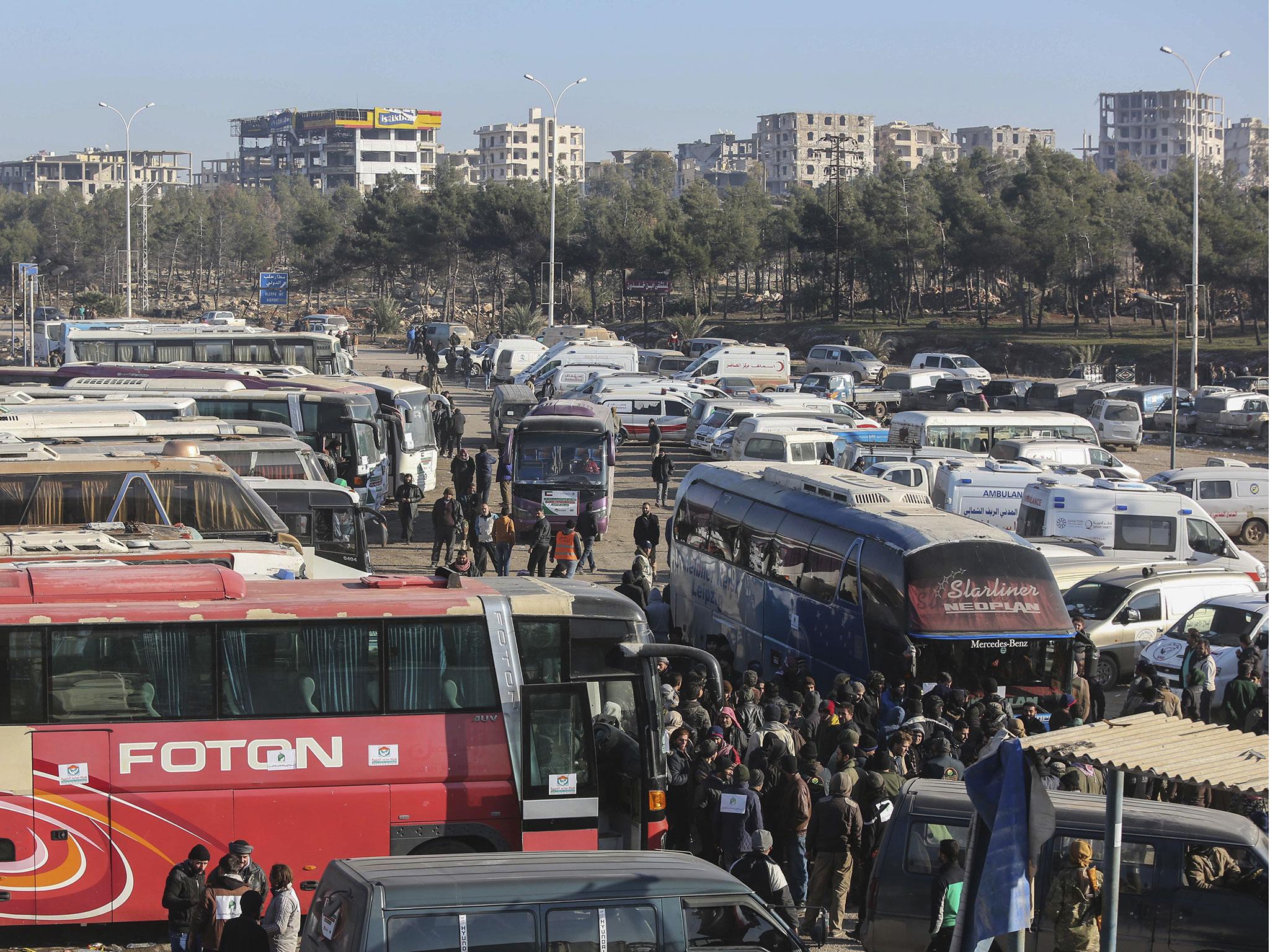Aleppo: 3,000 to leave destroyed Syrian city after evacuations stalled for a day
People waiting in freezing temperatures since evacuation halted Tuesday

Around 3,000 rebels and civilians are preparing to leave the rebel-held enclave of Aleppo after evacuations were stalled for a day.
People had been waiting in freezing temperatures since the evacuation halted on Tuesday, with dozens of buses stuck in the city.
Rebels and government forces blamed each other for the hold-up.
Their eventual departure will hand full control of the city to President Bashar al-Assad, when it will become the biggest prize of Syria's nearly six-year civil war.
The UK-based Syrian Observatory for Human Rights said 60 buses are expected to evacuate some 3,000 fighters and civilians from the opposition's last foothold in the city.
It is the last convoy set to leave Aleppo before the government is expected to declare it has reassumed full control of the city for the first time since rebels carved out an enclave for the opposition in 2012.
"Buses are now moving again from east Aleppo. We hope that this continues so that people can be safely evacuated," a UN official in Syria told Reuters.
So far, around 25,000 people have been evacuated from Aleppo, according to the International Committee of the Red Cross. A UN official said 750 people had so far been evacuated from al-Foua and Kefraya, which are under rebel siege.
Aleppo's rebel zone is a wasteland of flattened buildings, concrete rubble and bullet-pocked walls, where until recently tens of thousands lived under intense bombardment even after medical and rescue services had collapsed.
Rebel-held parts of the once-flourishing economic centre, with its renowned ancient sites, have been pulverised in a war which has killed more than 300,000, created the world's worst refugee crisis and enabled the rise of Isis.
But in the western part of the city, held throughout the war by the government, there were big street parties on Tuesday night, along with the lighting of a Christmas tree, as residents celebrated the end of fighting.
The Syrian army has used loudspeakers to broadcast warnings to rebels that it was about to enter their rapidly diminishing enclave and told them to speed up their evacuation.
The UN has sent more than 20 staffers to east Aleppo to monitor the evacuation.
For four years, the city was split between the rebel-held eastern sector and the government-held western districts.
During the summer, the army and its allies besieged the rebel area, before using intense bombardment and ground assaults to retake it in recent months.
Russian air strikes were the most important factor in the Assad regime's triumph. They enabled Syrian forces to press the siege of eastern Aleppo to devastating effect.
On the ground, Shia militias from as far afield as Iran and Afghanistan played an important role for the regime.
Despite victory in Aleppo, Mr Assad still faces great challenges in restoring the power of his state. While he controls the most important cities in western Syria and on the coast, armed groups including Isis control swathes of territory elsewhere in the country.
Additional reporting by agencies
Join our commenting forum
Join thought-provoking conversations, follow other Independent readers and see their replies
Comments